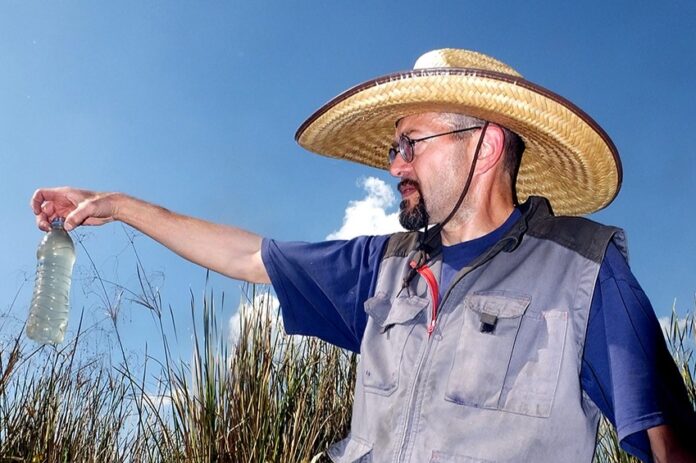I’m sitting in the town of Casa Blanca, Jalisco, population 600, with local activist Juanita Ramírez, as we find ourselves surveying the wetlands in the area. On the floor next to me there’s a mountain of colorful ears of corn that need shelling.
Ramírez is telling me about the Santiago River, one of Mexico’s biggest, which flows just 644 meters north of the center of Casa Blanca.
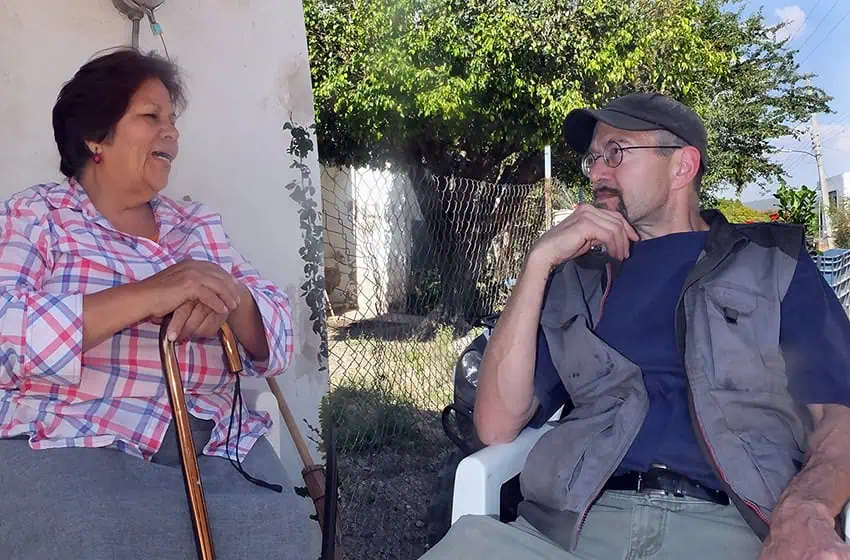
The Santiago River
“When I was a girl, we loved that river,” she relates, dreamy-eyed. “Everyone from the village went for a stroll there on Sundays. My father fished in it and that’s where I learned to swim. Yes, it’s true: I learned to swim in the Santiago River!”
Today Ramírez is 71. A generation has passed, and the Santiago now has the dubious honor of being listed among Mexico’s top four most polluted waterways.
“Today,” she says, “The river is a pestilence. It stinks! the air around it is full of flies! Not even the animals can drink its waters!”
The river is polluted by industrial waste from hundreds of factories and the raw sewage of hundreds of communities. Juanita’s town, however, is no longer among them.
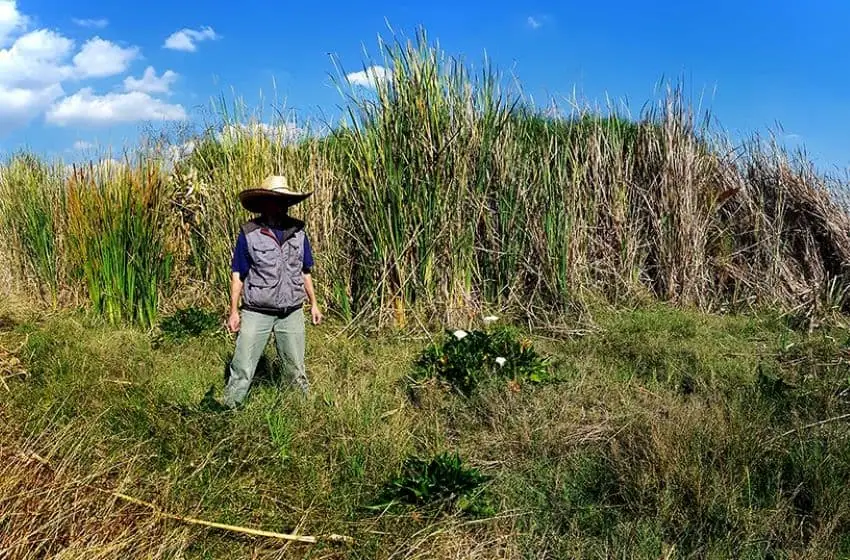
“It all started in 2013,” Juanita told me, “when we learned that a rock pulverizing plant was going to open right next to our town. Now in those days, I worked in Guadalajara and one of the things I loved most in life was relaxing at home on the weekend, sitting in the breeze before an open window. Now the air would be full of rock dust… Do you know what that does to your lungs?”
Healing the Santiago
Word spread and interested outsiders came to help the community of Casa Blanca in their fight. One of them was Joshua Greene, an anthropologist who also happened to be a member of an organization called Ríos Vivos.
“After a hard struggle,” Greene told me, “the people of Casa Blanca won their battle against the pulverizing plant. In the process, we had all become friends and I knew they were concerned about the fact that their sewage was going straight into the river. Unfortunately, they, like most Mexican communities, expected the government to resolve their problems.”
“‘The government is not going to help. The cavalry is not going to save you,’ I told them. They were all surprised when I suggested that they themselves could build a plant, if they were willing to.”
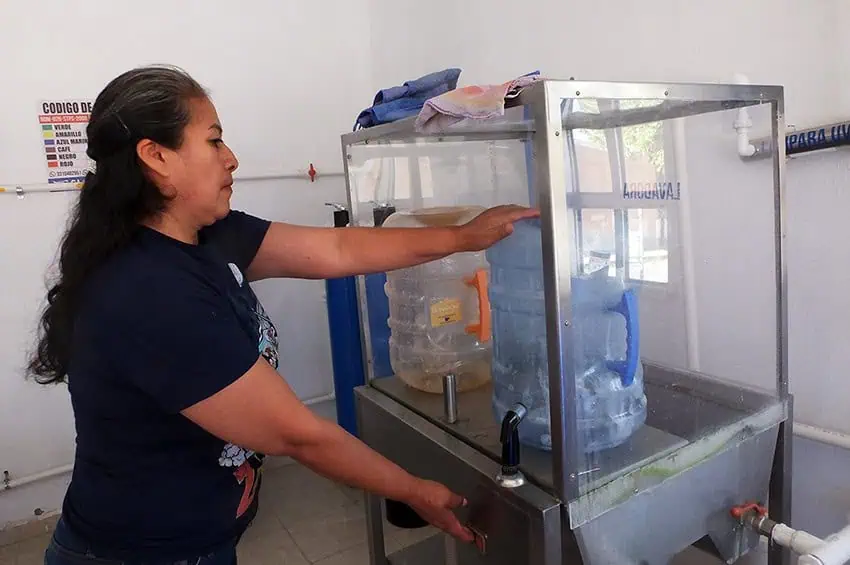
Whereas successive federal administrations have built expensive sewage treatment plants all over Mexico, many of them have been shut down after a year or so because local governments couldn’t afford the cost of maintenance, much less pay the salary of a technician to run the place.
Instead of this, Joshua Greene proposed that Casa Blanca use a low-tech constructed wetland system to filter wastewater. This system consists of two parts: a large septic tank where solids can settle, followed by a flat rectangular hole a meter deep and the size of a large swimming pool, filled with lemon-sized chunks of the light volcanic rock called tezontle, ubiquitous in Mexican colonial construction.
This extremely cheap rock is brittle and filled with holes. Inside of every one of these holes live bacteria that devour human waste and break it down. This does a fairly good job of filtering raw sewage that flows into the constructed wetland. To complete the job, reeds and certain flowers are planted in the bed of tezontle. These absorb pollutants, such as nitrogen, phosphorus and heavy metals, complimenting the tezontle’s work.
From the far end of the constructed wetland flows grey water that could be used for all sorts of purposes such as watering avocado trees.
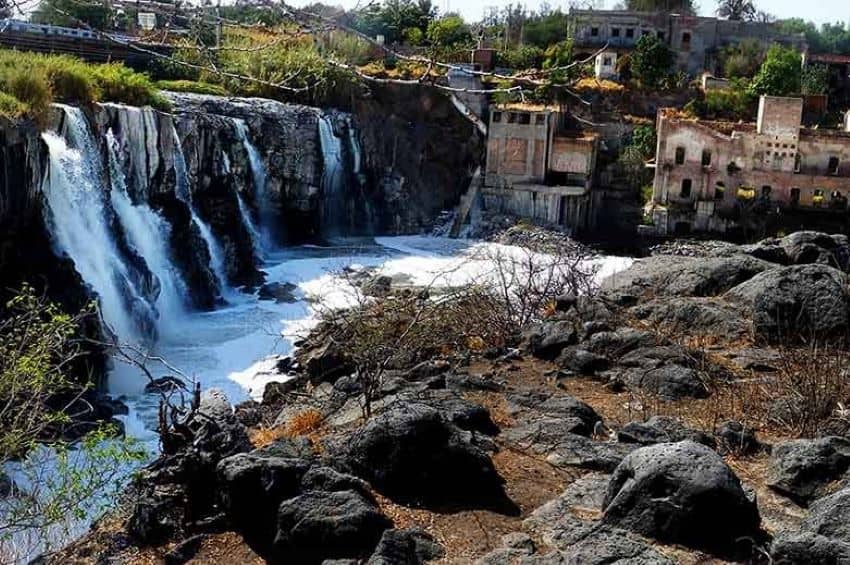
Maintenance of the system requires periodical pumping out the big septic tank and regular pruning and weeding of the plants that grow in the constructed wetland.
Casa Blanca’s filtration system has been working for four years and working well. Their success has inspired nearby communities to follow suit and at the time of this writing the town of Ojo de Agua, eight kilometers away, is building its own constructed wetland. Until now this village had been pouring its sewage directly into a little cove on Lake Chapala, the same cove where they all go to fish and swim. But that is about to end.
“To help carry this out,” says Joshua Greene, “Ojo de Agua has received help from the Rotary Club of Chapala and the Gonzalo Río Arronte Foundation, and we soon hope to have five communities around the lake filtering their sewage through constructed wetlands.”
Greene estimates that there are 18 constructed wetlands already built in Jalisco and two more on the way. “Let’s hope,” he says, “that word will spread, and that all the rest of Mexico will follow suit.”
John Pint has lived near Guadalajara, Jalisco, for more than 30 years and is the author of A Guide to West Mexico’s Guachimontones and Surrounding Area and co-author of Outdoors in Western Mexico. More of his writing can be found on his website.
